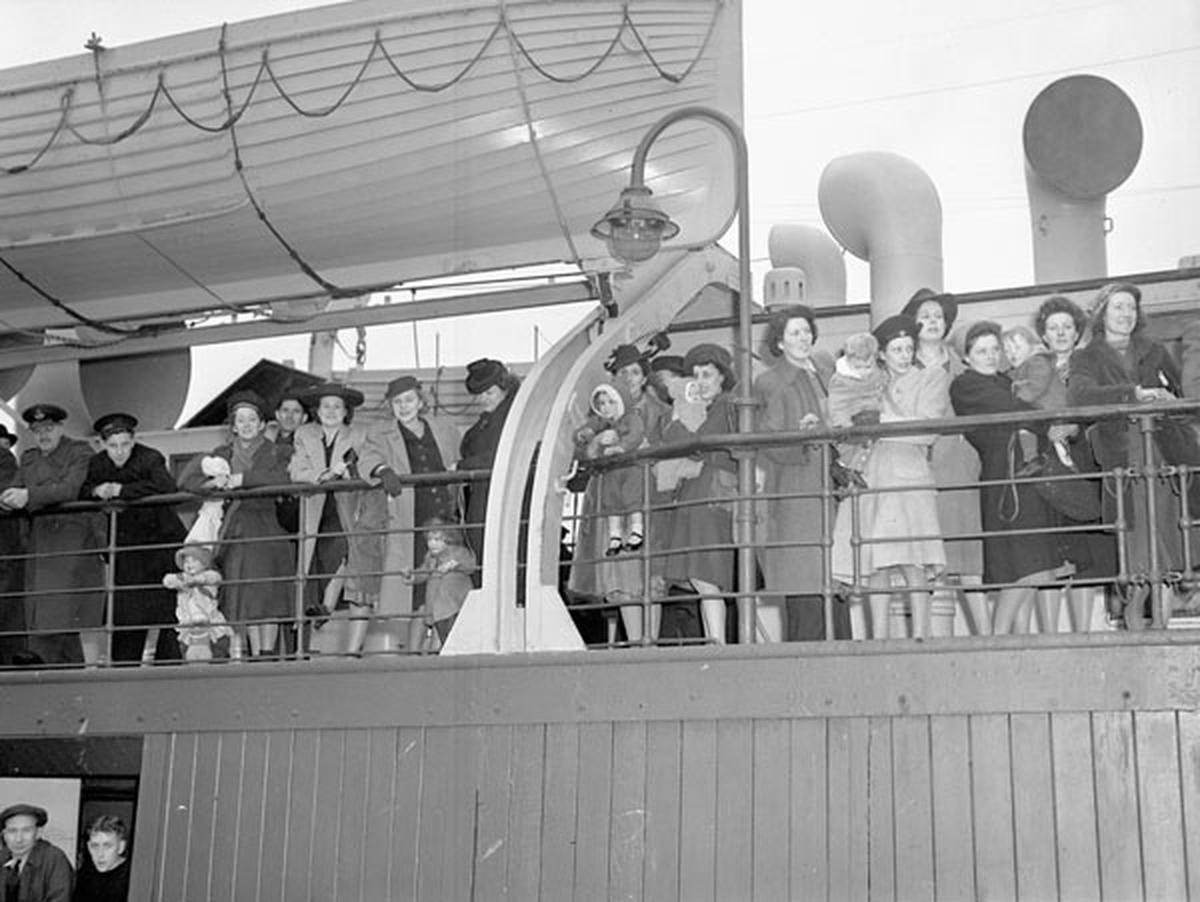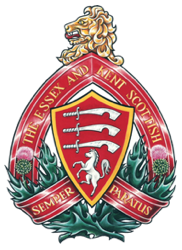War Brides in World War II

War brides and their children leaving England for Canada. Dated 17 April 1944. Source: Legion Magazine. “Homesick, seasick, and lovesick.” 8 February 2021. https://legionmagazine.com/en/2021/02/homesick-seasick-and-lovesick/.
With the influx of North American soldiers into the United Kingdom and continental Europe during World War II, relationships between soldiers and European women, particularly those from the United Kingdom, increased significantly. Europe was left financially crippled by the 1939 to 1945 war across the continent. With the arrival of Canadian and American soldiers into Europe, women were intrigued by North American wealth and safety. Soldiers liked the exoticism and availability of British women, and as such impromptu marriages and engagements were common. In fact, there were so many marriages between British women and American soldiers that the British government made the marriage process more strenuous to deter couples from marrying. Many couples knew each other for several years depending on how long soldiers were stationed in Britain. Commanding officers also made it difficult for soldiers to marry overseas, which coincided with military protocol that discouraged any marriage. Furthermore, there were an unprecedented amount of wartime pregnancies fathered by soldiers staying overseas during World War II. This number totalled approximately 22,000 children.
The need for soldiers to have entertainment in their downtime created a culture of dances, dinners, and parties amongst military members as a way for them to meet people and interact with the locals in a way that was controlled by the government. This period saw an increase in social commentary on dating culture and public health reform. Specifically, these measures were put in place to reduce and control cases of venereal disease.
Many British women immigrated to Canada and the United States after the war ended. Approximately 48,000 women immigrated to Canada during and after World War II. Their treatment once in Canada was not always pleasant. It was often harder for them to get jobs, and they were more likely to feel isolated in their communities due to a lack of support from their families back home. The trip to Canada via ships such as the Queen Mary was an expense few families could afford, so these women often had to travel alone to their new home. Others fell out with their families because their parents did not approve of their marriages. The Canadian government created the Canadian Wives’ Bureau in London to help ease the transition for wives of Canadian service members. The Bureau gave these women and their families access to information about Canada and even Canadian cookbooks. However, there was still a significant cultural change when moving to a new country. This was aggravated by the fact that some women were given little notice before they were told they were moving to Canada. They were often left to rely upon their husbands for security and financial support, meaning that they were sometimes taken advantage of or mistreated. If these new brides were unhappy in their new lives, the Canadian government would not pay for their return ticket home, meaning that they were either unable to leave or had to rely on organizations such as the Red Cross for assistance.
Once in Canada, the journeys for war brides across the country to their new homes was often long. Most war brides disembarked from ships at Pier 21 in Halifax, Nova Scotia, before boarding trains to move elsewhere in Canada. This trip could take several days. Many of these women experienced rural living for the first time in their lives, especially if they moved to the Prairies. If they moved to French-speaking areas, they also faced a language barrier on top of the pre-existing cultural one.
Nevertheless, these women came to Canada in hopes of finding a better life than the one they had in Europe, a phenomenon which went against the general federal limitations on immigration into Canada at the time. The stories of these women contribute to our understanding of Canada both during and after the war, as well as add to our knowledge of what life was like for civilians during the war.
Story by Nicole Pillon, Canada Summer Jobs 2022 participant
with The Essex and Kent Scottish Regiment Association
Sources
- Like a Bamboo: Representations of a Japanese War Bride by Debbie Storrs, published in Frontiers: A Journal of Women Studies (2000)
- Only the Best British Brides': Regulating the Relationship between US Servicemen and British Women in the Early Cold War by Giora Goodman, published in Contemporary European History (2008)
- ‘They Brought us Eaton’s Catalogues’: Issues of Gender, Consumerism, and Citizenship in the Stories of Second World War British War Brides by Corrine Kennedy (2002)
- https://www.veterans.gc.ca/eng/remembrance/history/second-world-war/canadian-war-brides
